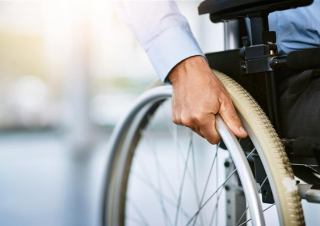The Claimant (date of birth 24.04.1944) had a metallic aortic heart valve replacement performed in 2002. As a result, he was on long term Warfarin (a blood thinning medication) and his target INR was 3.0-4.5.
On the 29th November 2021, the Claimant was admitted to Harrogate District Hospital and treated for urosepsis with IV antibiotics for 7 days. His INR was sub-therapeutic (1.6) on admission and his anticoagulation doses were adjusted accordingly. On admission, the Claimant was reported to be independent with mobility, requiring no assistance or equipment.
The Claimant suffered a fall on 2nd December 2021. An MRI scan performed on 3rd December 2021 showed lumbar spine disc bulges with moderate central stenosis. A subsequent addendum to the MRI report suggested that the Claimant was also suffering from bilateral iliacus and psoas muscle collections consistent with haemorrhage of varying ages. In simple terms, the blood thinning medication was causing bleeding into the Claimant’s muscles, leading to nerve compression and a loss of mobility.
The records indicate that no action was taken in response to the MRI addendum until 5th December 2021. This meant that for two days, the bleeding into the Claimant’s muscles continued untreated. Once the MRI addendum was properly noted, it is alleged that the Claimant’s anticoagulation was not appropriately managed. As a result of inappropriate anti-coagulation therapy between 2nd December 2021 and 24th December 2021, the Claimant suffered continued intra-muscular bleeding.
As a result, the Claimant became bed bound. He had no power in his limbs and required the assistance of two with a slide sheet to reposition in bed.
A CT scan performed on 14th December 2021 confirmed an increase in size of the left iliopsoas haematoma. Despite this, enoxaparin (a blood thinner) continued.
He was discharged home in February 2022 when able to do slide board transfers, as he wished to continue his rehabilitation at home. He was initially wheelchair bound but progressed to walking short distances around the home with a four wheeled walker. When outdoors he used a self-propelled wheelchair. He needed assistance with most activities of daily living.
Our expert evidence suggested that with earlier treatment, the Claimant’s outcome would have been much better. He would not have suffered such a severe loss of mobility and power and would have been ambulant, possibly with the assistance of a walking stick. He would not have required as many blood transfusions.
Sadly, the Claimant died on 2nd June 2024 for reasons unrelated to the negligence. His claim was therefore continued by his Estate and was limited to pain and suffering and care from the time of the negligence to the date of his passing.
Even though the defendant disputed several aspects of the Claimant’s claim, a successful settlement was reached following the disclosure of various expert reports obtained on behalf of the Claimant.
